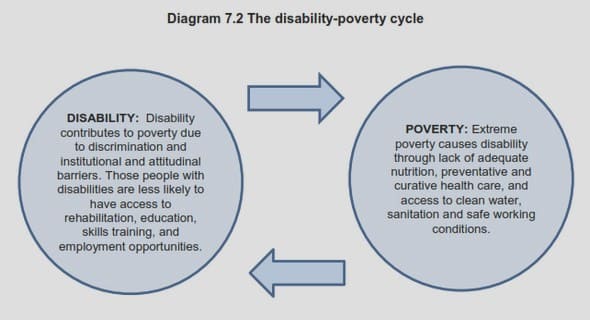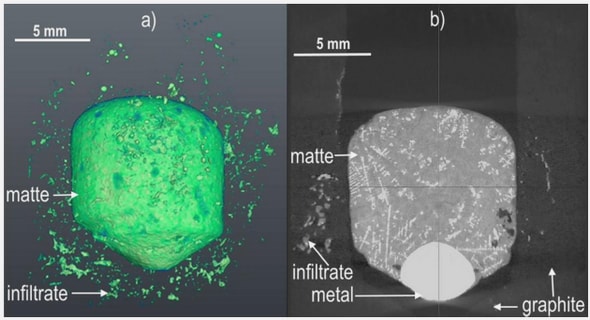Get Complete Project Material File(s) Now! »
Fluid phases velocities
R of eqn (1.17) is the resistance tensor that accounts for the frictional interactions between phases. For example, porous medium flow of a single fluid encounters resistance to flow due to interaction of the fluid with the solid. If one has to model the flow at the microscale, a viscous stress tensor within the fluid phase would be employed. At the macroscale, the effects of the viscous interaction are accounted for as being related to the difference in velocities of the phases. In multiphase flow, resistance tensors must be developed that account for the velocity differences between each pair of phases. Eq (1.15) contains the interaction vector k a ®.
T that arises between each pair of phases. In the full implementation of the TCAT analysis, the simplest result is that this vector is proportional to the velocity difference between the two considered phases with the resistance tensor being the coefficient of proportionality. In the present version of the model, the interaction force s®a T between the fluid phase and the solid phase s (solid mineral skeleton) is explicitly taken into account while the macroscopic effect of the interaction forces between the liquid and the gaseous phases is taken care of through the relative permeabilities s el ka . The form of ( ) a −1 R is here assumed following the modeling of multiphase flow in porous media (Lewis and Schrefler, 1998), that is to say.
A hydration-dependent desorption isotherm
The desorption isotherm is closely linked with the microstructure of the cement paste that shows important changes during hydration (refinement of the porous network). Hence the classical analytical expression proposed by Van Genuchten (1980) is properly adapted to take into account the degree of hydration (Sciumè et al., 2012) where a and b are the classical parameters of the equation of Van Genuchten, while c and Bi are the newly introduced parameters. The curves obtained at different degrees of reaction are shown in Figure 1.5.a. The experimental evaluation of adsorption properties during hydration is hard to perform, thence the results in bibliography concern
hydrated or almost completely hydrated concretes or cement pastes. Due to this reason eqn (1.52) has not been directly validated. However, if a parallelism between the w/c ratio and the hydration degree is considered, via the degree of refinement of the microstructure of the cement paste, to a lower w/c ratio corresponds a more refined microstructure and so an higher degree of reaction .
Creep rheological model
In the reference model of Gawin et al. (2006b), creep is modeled by means of the solidification theory (Bažant and Prasannan, 1989a and 1989b) for the description of the basic creep, and microprestress theory (Bažant et al., 1997) for the description of the long-term creep and the drying induced creep (the so called drying creep); both the solidification and the microprestress theories had been properly adapted for a multiphase porous material by Gawin et al. (2006b). The thermodynamic consistency of the aging visco-elasticity theory has been shown by Pesavento et al. (2008). Here, a rearranged version of the reference model is adopted to compute the creep deformation: the separate effects of aging elasticity, non-aging creep and microprestress developments are reunified through the definition of a rheological model made of a Kelvin-Voigt chain and two dashpots combined in serial way (see Figure 1.6). The first two cells (aging Kelvin- Voigt chain and one single dashpot) are used to compute the basic creep and the last cell (single dashpot) is dedicated to the drying creep strain.
Thermal and hygral strains
The thermal strain eth is related to the temperature variation: th T e =a q1 (1.76) in which t is the thermal dilatation coefficient (kept constant) and 1 is the unit tensor. To compute the shrinkage, the instantaneous elastic part and the viscous one must be considered: inst visc.
Table of contents :
PREFACE AND ACKNOWLEDGMENTS
LIST OF SYMBOLS AND ABBREVIATIONS
Abbreviations
General and TCAT symbols
Symbols in the concrete sections (Chapters 1, 2 and 3)
Symbols in the tumor section (Chapter 4)
GENERAL INTRODUCTION
1 MULTIPHYSICS MODELING OF CONCRETE AT EARLY AGES
1.1 Introduction
1.2 Brief overview of TCAT
1.2.1 Microscale
1.2.2 Macroscale and concept of representative elementary volume REV
1.2.3 Closure techniques
1.2.4 The TCAT procedure
1.2.5 Advantages of the TCAT approach
1.3 The multiphase system
1.4 General governing equations
1.4.1 Mass.
1.4.2 Momentum
1.4.3 Energy
1.5 Constitutive equations
1.5.1 The hydration model and averaged stoichiometry of the reaction
1.5.2 Fluid phases velocities
1.5.3 Water vapour diffusion
1.5.4 A hydration-dependent desorption isotherm
1.5.5 The effective stress principle
1.5.6 Effective thermal conductivity and thermal capacity
1.5.7 Mechanical constitutive model
1.5.8 Creep rheological model
1.5.9 Thermal and hygral strains
1.5.10 Damage model
1.6 Final system of equations
1.7 Numerical solution and computational procedure
References of Chapter 1
2 CONCRETE BEHAVIOR: EXPERIMENTAL DATA AND MODEL
RESULTS
2.1 Introduction
2.2 Hydration process and related phenomena
2.2.1 Microstructure of the cement paste
2.2.2 Heat of hydration of cement
2.3 Mechanical properties
2.4 Self-desiccation and autogenous shrinkage
2.5 Hygral transport and drying shrinkage
2.6 Basic and drying creep
References of Chapter 2
3 VALIDATION OF THE MODEL: TWO REAL APPLICATION CASES
3.1 Introduction
3.2 The ConCrack benchmark
3.2.1 Identification of the model parameters
3.2.2 Finite element mesh of the structure and boundary conditions
3.2.3 Thermo-hygro-chemical results
3.2.4 Mechanical results and four point bending test
3.3 Application to repairs of concrete structures
3.3.1 Identification of the model parameters
3.3.2 Modeling of the two repaired beam and of the reference one
3.4 Conclusions
References of Chapter 3
4 EXTENSION OF THE MATHEMATICAL APPROACH TO TUMOR GROWTH MODELING
4.1 Introduction
4.2 TCAT procedure for biological system
4.3 Context and bibliographic review of tumor growth models
4.4 The multiphase system
4.5 General governing equations
4.6 Constitutive equations
4.6.1 Tumor cell growth.
4.6.2 Tumor cell death.
4.6.3 The rate of nutrient consumption.
4.6.4 The diffusion of nutrients through the ECM.
4.6.5 The interaction force among the phases.
4.6.6 The mechanical behaviour of the ECM.
4.6.7 The differential pressure between the three fluid phases
4.7 Final system of equations
4.8 Spatio-temporal discretization and computational procedure
4.9 Three applications of biological interest
4.9.1 Growth of a multicellular tumor spheroid (MTS) in vitro
4.9.2 Multicellular tumor spheroid (MTS) in vivo
4.9.3 Tumor growth along microvessels (tumor cord model).
4.10 Conclusions and perspectives
References of Chapter 4
APPENDICES
A. Linear momentum balance equation for a fluid phase
B. Time discretization of creep, shrinkage and thermal strains
C. Coefficients of the matrices appearing in equation (1.98)
D. Coefficients of the matrices appearing in equation (4.41)


